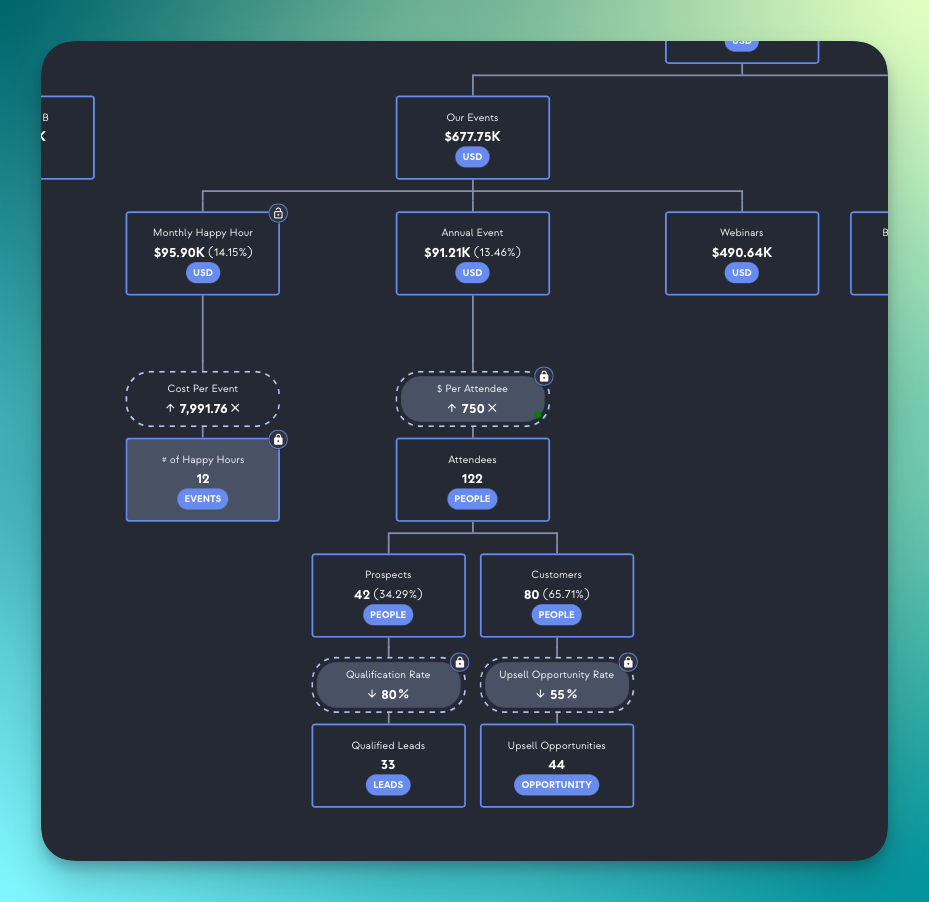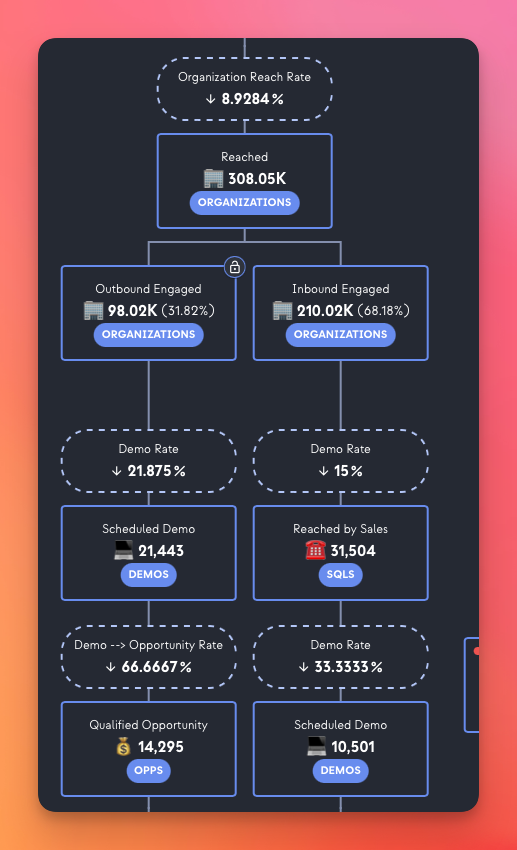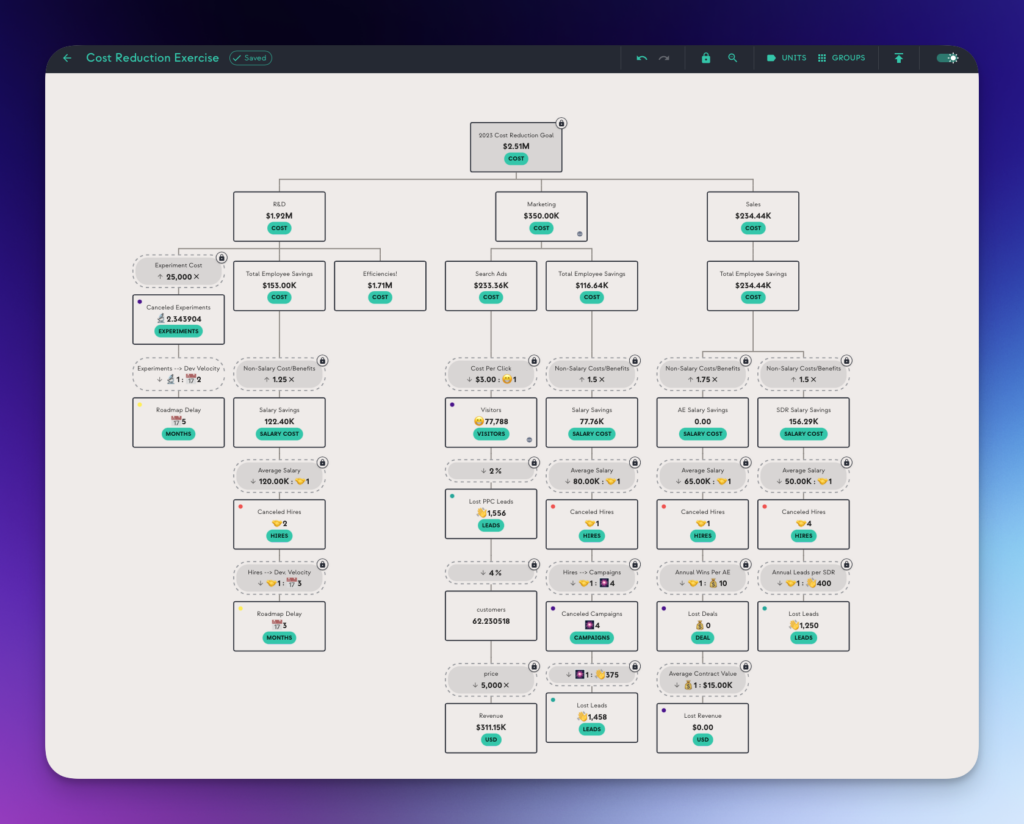(Post title inspired by 2013-style listicle clickbait. You’re welcome.)
Resolution is still a very new piece of software, but it’s still the case that I’ve been working on it and thinking about it for a while. There’s a lot of stuff I want to add (and some things I want to change completely!), and if I’m being honest, I spend most of my time thinking about that.
One of the problems with that, though, is that I often take for granted what exists in Resolution right now, until someone excitedly explains it to me and I sort of blankly say “yeah, I know”. (Again, I’m working on this.)
Anyways, here are five of those really cool, simple things that you should go try out right now. No forward-looking or “coming soon” features required.
1) Ask for some money
When I ran marketing departments, I was often hesitant to ask for money to spend — not because I didn’t want to spend money (“wheeee!!!”), or even because I didn’t have any ways to spend it that I thought were good ideas. It was because showing a justification for giving me that money was usually a lot of work, and really hard to get right.
I would spin up a spreadsheet that made the argument, and my boss would ask me a question the spreadsheet wasn’t built to answer. Or my boss would push back on one of the numbers in my spreadsheet, and I’d find it was built into a bunch of formulas and I needed to hunt them all down. Pretty soon my spreadsheet would be closed and we’d be having a qualitative discussion about the issue, or worse, a quantitative discussion with lots of disconnected numbers and assumptions being thrown around.

Resolution, on the other hand, is a great way to ask for money. You can very quickly take that pile of money, and turn it into things your boss actually wants (usually more money, but could be other things), and all the required assumptions and rates will just… show up! It’s super easy to handle pushback and update a Resolution in real-time, or even add additional factors you forgot to include.
2) Plan your week
Fundamentally, management (of yourself or others) often comes down to making sure time gets spent on the right things. Maybe that’s bunch of different projects, or activities, or rest, or whatever. But in the end, you can’t add hours to the day, and you can only reduce how long certain things take by so much.
And of course, hours for the sake of hours isn’t really that useful, at least for things that aren’t “rest” or “having a great time”. You’d like to learn something, or create some sort of work product that leads to a positive outcome (like money, or a happy person).
The ability to easily turn a finite amount of time into other things, at different rates, makes Resolution a great way to think about time management a little differently. Simply by knowing what you want, and how long you have to get it, you can start to think about everything from where your priorities should be, to what realistic outputs are, to how efficiently you need to be working. If you’ve never done an exercise like this before, be prepared — it can be incredibly enlightening.
3) Set some better goals
Many of us work as part of a larger process or funnel, turning money into customers, or raw materials into products, at different rates. But even though we know our process is slightly different from everyone else’s, when it comes to goals, we’re often quick to assume what we should be increasing and decreasing based on what we hear from people doing similar types of work.

But that’s wrong! Certain parts of your process can be incredibly high or low leverage, and assigning yourself an “industry standard” goal without taking a few minutes to dig a little deeper and figure out if it actually matters is a great way to waste a lot of time and demoralize everyone.
So… maybe don’t do that. Take 20 minutes to build out a simple Resolution model of your process and see where the choke points really are. Best case scenario, you’ll metrics and goals that actually matter. Worst case, you’ll discover what you don’t know, and why that’s a problem.
4) Build an organization
Whether it’s money, people, or potential customers, Resolution makes it really easy to divvy up something important among an organization, and figure out where it leads. You can add a new product line with a whole new set of costs and revenues, or a new region with a similar, but slightly different sales funnel. Personally, I like to anticipate capacity planning problems and figure out how many support technicians, account managers, or help desk people will be necessary to support a growing operation.

One of the reasons Resolution works so well for these kinds of processes is that they’re often pretty unique to whoever is trying to map them. Support problems, for instance, are not one-size-fits all — one company may have a single resource handling multiple customers, and another could have thousands of tickets being spread out among multiple teams. If you want to set up a model for either of those situations that’s easy for other people to read, critique, and iterate on, skip the formulas and spin it up in Resolution.
5) Brace for the worst
Personally, I think business people constantly overstate how much more “uncertain” everything is than normal. People have been complaining about uncertainty my entire life! Still, there’s value in being ready for a sudden collapse in a metric or other factor of the business. What if we lost our Top 5 customers? What if the price of getting a new customer went up 500%? What if the best way to retain customers suddenly became illegal?
These aren’t things you want to spend all day building hyper-accurate models of, because most of them time they won’t even happen, so what’s the point? But it’s important to have a general understanding of what-ifs like this, if for no other reason than having a compelling reason to tell people to relax a little.
Resolution is the perfect way to split the difference. You don’t need a profit-and-loss, accounting-level statistical model here (nor do you want to spend the time, effort, and talent to make one) — you need a quick, easy to read understanding of what is and isn’t survivable. And Resolution models allow you to change any factor at any time, so when someone’s crazy nightmare scenario comes up in a meeting, you can throw it into the model quickly and either assuage their fears, or realize they might actually have a point.
But wait, there’s more!
Of course there is. For starters, take a look at the Examples page (for walkthroughs and video tutorials) or the Model Index (which just has everything organized by type). If that doesn’t give you an idea, I want to know what you do for a living. It’s probably something badass, like underwater welding.

